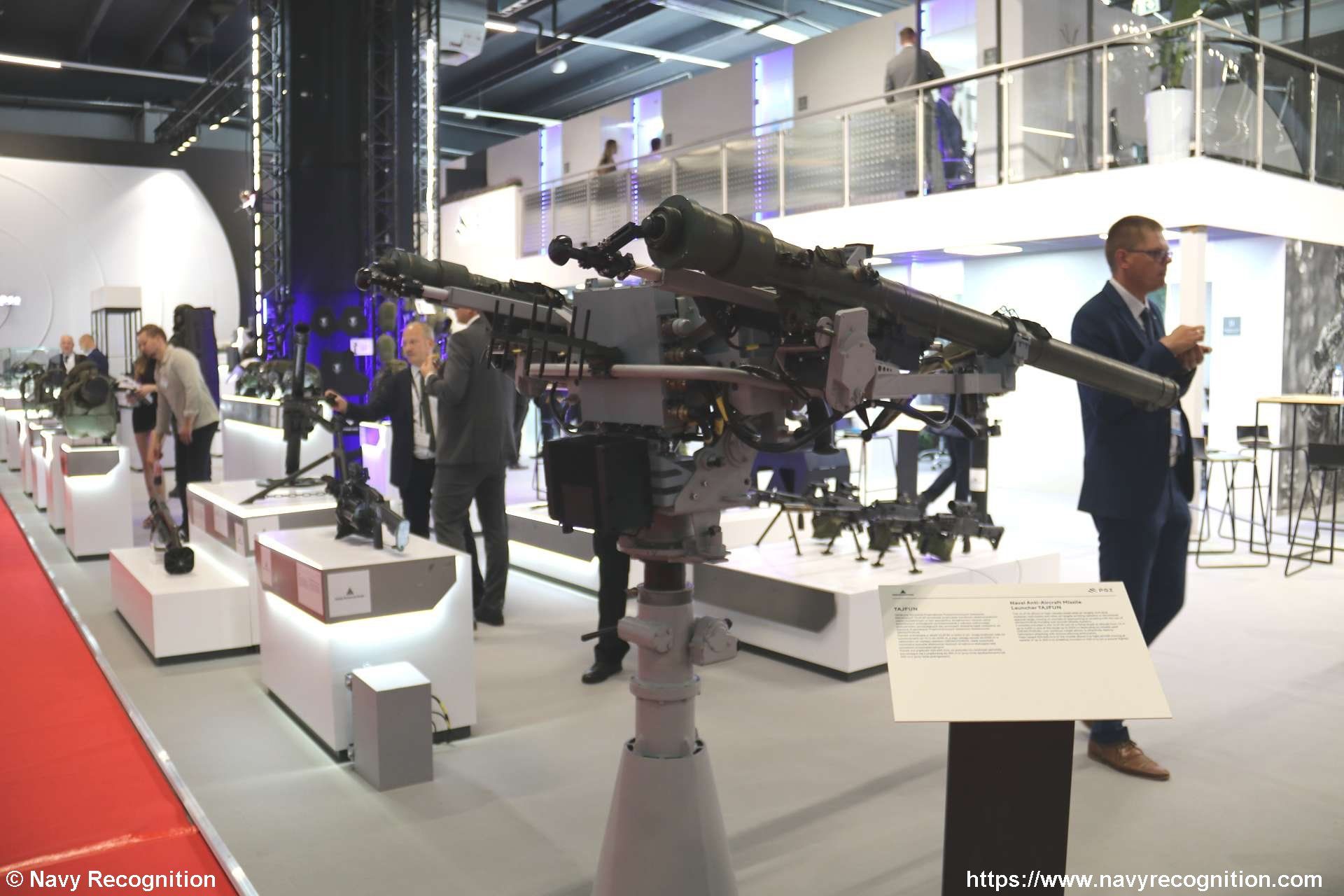Breaking News
TAJFUN missile launcher by PGZ debuts at MSPO 2024: advanced naval air defense system.
The 32nd International Defence Industry Exhibition (MSPO) 2024, held at Targi Kielce in Poland from September 3 to 6, showcased the latest advancements in military technology and strategic defense partnerships. This year's event featured over 769 companies from 34 countries, making it a record-breaking edition. Among the highlights was the unveiling of the TAJFUN naval anti-aircraft missile launcher by the Polish Armaments Group (PGZ), a system designed to counter airborne threats with advanced targeting capabilities, including helicopters, drones, and aircraft detectable in the infrared spectrum.
Follow Army Recognition on Google News at this link

Naval Anti-Aircraft Missile Launcher TAJFUN in Kielce, Poland. (Picture source: Navy Recognition)
The TAJFUN naval anti-aircraft missile launcher offers significant advantages for modern naval defense, enhancing a fleet's ability to counter a variety of airborne threats in complex maritime environments.
Its design integrates the use of GROM and PIORUN Portable Anti-Aircraft Missiles, which are capable of targeting diverse threats such as aircraft, helicopters, and drones that emit infrared radiation. This versatility allows TAJFUN to effectively engage targets across different altitudes and distances, providing robust protection against both high-altitude bombers and low-flying attack helicopters.
One of the key benefits of the TAJFUN system is its low minimum engagement altitude, which allows it to intercept threats as low as 10 meters. This capability is particularly valuable in defending against helicopters and other low-altitude threats that might attempt surprise or close-range attacks.
Additionally, with missile speeds reaching between 600 to 640 meters per second, TAJFUN is well-suited to intercept high-speed aircraft, enhancing a naval vessel’s ability to protect itself in fast-moving and dynamic combat scenarios.
The system's flexibility extends to its deployment across various naval platforms, from smaller patrol boats to larger frigates. This adaptability ensures that different classes of ships can be equipped with effective air defense capabilities, tailored to their specific operational needs.
Moreover, TAJFUN's integration with existing radar and command systems allows for a more cohesive defense strategy, improving coordination and situational awareness among multiple naval assets.
This development is part of a broader trend in Poland's defense strategy, which includes significant investments in air defense systems. For example, the Polish government recently entered into a deal with British and Polish firms to develop Poland's air defense infrastructure, involving a $5 billion agreement for missile systems and technology transfers.
Additionally, PGZ has partnered with Lockheed Martin to deliver missile launchers for the Polish Navy, which will be equipped with the Mk 41 vertical launching systems and CAMM missiles, further enhancing the naval capabilities of Poland's fleet.


























